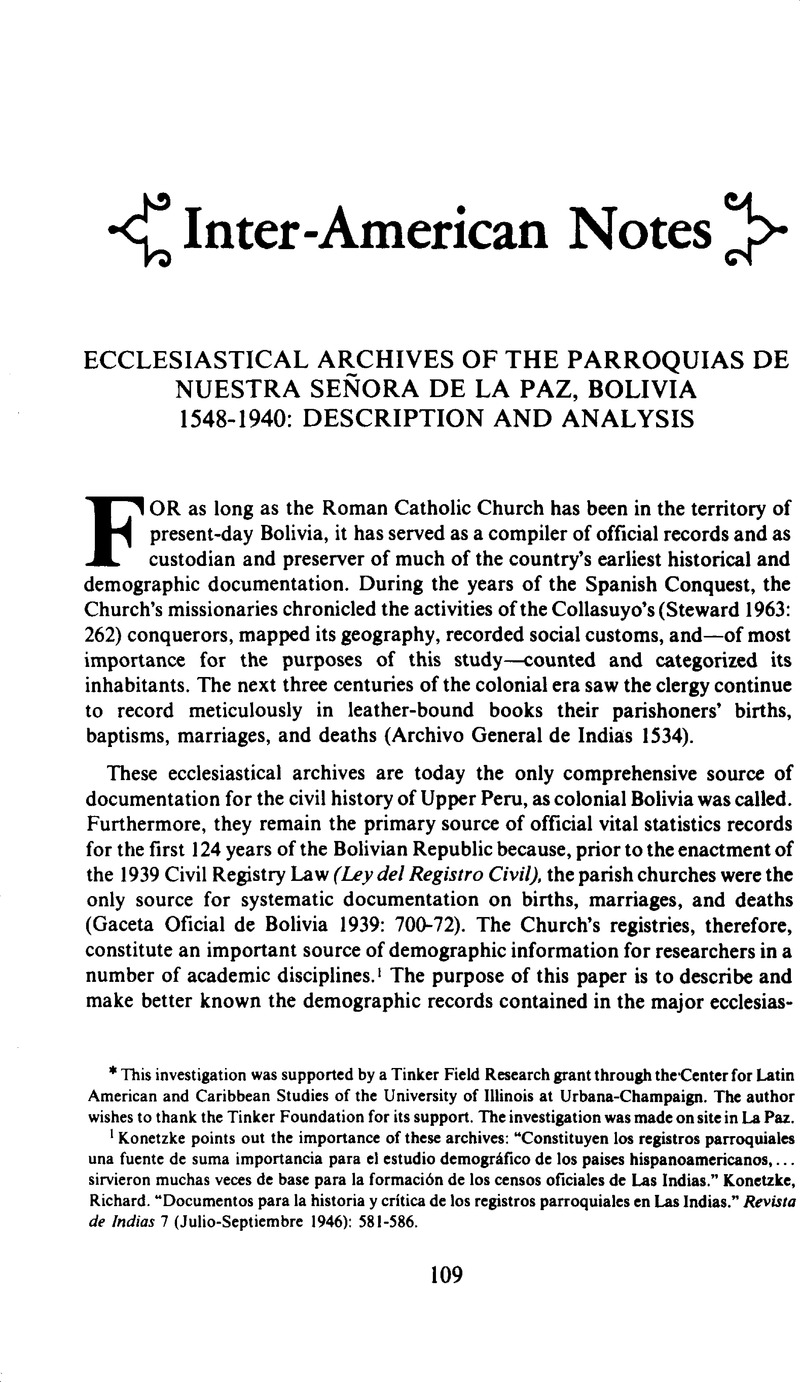No CrossRef data available.
Article contents
Ecclesiastical Archives of the Parroquias de Nuestra Señora de la Paz, Bolivia 1548-1940: Description and Analysis
Published online by Cambridge University Press: 11 December 2015
Abstract

- Type
- Inter-American Notes
- Information
- Copyright
- Copyright © Academy of American Franciscan History 1983
References
* This investigation was supported by a Tinker Field Research grant through the Center for Latin American and Caribbean Studies of the University of Illinois at Urbana-Champaign. The author wishes to thank the Tinker Foundation for its support. The investigation was made on site in La Paz.
1 Konetzke points out the importance of these archives: “Constituyen los registros parroquiales una fuente de suma importancia para el estudio demográfico de los paises hispanoamericanos,… sirvieron muchas veces de base para la formación de los censos oficiales de Las Indias.” Richard, Konetzke, “Documentos para la historia y crítica de los registros parroquiales en Las Indias.” Revista de Indias 7 (Julio-Septiembre 1946): 581–586.Google Scholar
2 Citizens born before 1939 have no birth certificate from the Registro Civil. Since this or a similar document is a prerequisite for acquiring Bolivia’s national identification document, the Carnet de Identidad, many citizens—particularly peasants—go to the church registries in order to receive the necessary documentation. The rush to obtain the Carnet de Identidad has been accelerated as of late because the current military government requires the Carnet de Identidad in order to travel during curfew hours.
3 The exclusion of race in many baptismal entries after 1900 may be due to the fact that a standardized format for recording baptisms was introduced in 1913 by the church.




